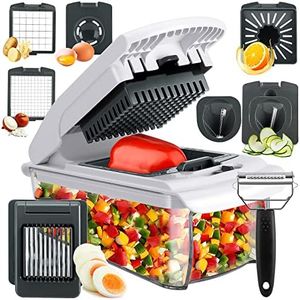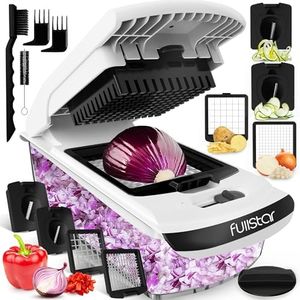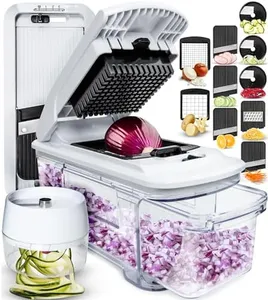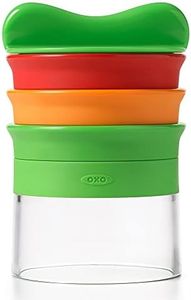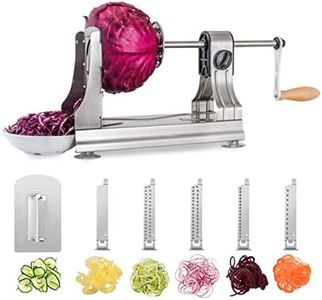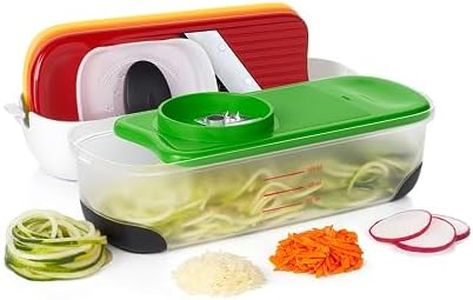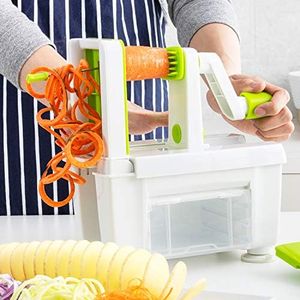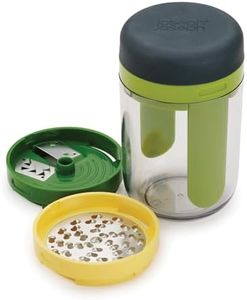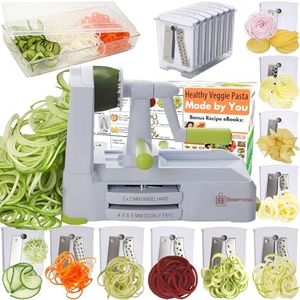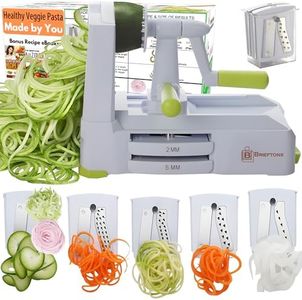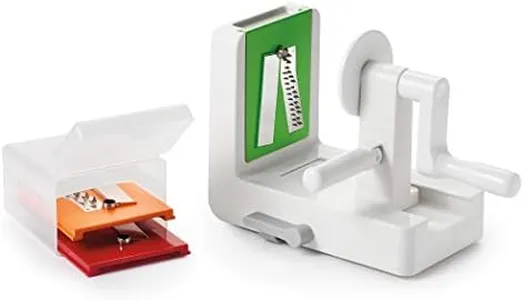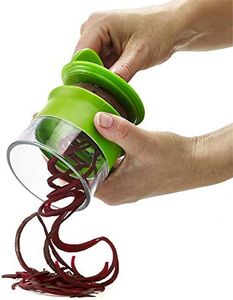We Use CookiesWe use cookies to enhance the security, performance,
functionality and for analytical and promotional activities. By continuing to browse this site you
are agreeing to our privacy policy
10 Best spiralizers
From leading brands and best sellers available on the web.By clicking on a link to a third party's website, log data is shared with that third party.
Buying Guide for the Best spiralizers
Spiralizers are handy kitchen tools used to turn vegetables and fruits into spirals, noodles, or ribbons. They're popular for making healthy, creative meals, especially as low-carb replacements for pasta. Choosing the right spiralizer depends mainly on your intended use, the amount of food you'll want to prepare, and your preference between manual or electric operation. Understanding the key features can help you select a spiralizer that's easy to use, safe, easy to clean, and capable of producing the shapes and sizes you want.Type (Manual vs. Electric)Spiralizers are available as manual or electric models. Manual spiralizers typically use a crank or a hand-twisting motion and are usually more compact, affordable, and straightforward. Electric spiralizers, on the other hand, automate the spiralizing process and are great if you plan to use the tool frequently or for larger quantities. When deciding, consider how much food you’ll prep and whether you prefer the simplicity of manual operation or the convenience (and speed) of electric. For smaller, occasional jobs, manual spiralizers work well. For frequent use or large batches, electric may be worth the extra size and effort in cleaning.
Blade OptionsBlades determine the shapes and thicknesses of the noodles you can create. Spiralizers usually come with multiple interchangeable blades for making thin, thick, or ribbon-style spirals. The variety and sharpness of blades affect the versatility and final look of your dishes. More blade options offer more creativity in the kitchen, but they can add to storage and cleaning requirements. If you only want to make zoodles or basic spirals, a model with fewer blade types may be sufficient. If you love kitchen experimentation, look for more blade variety.
Ease of UseEase of use includes how simple the spiralizer is to operate, how smoothly it cuts, how stable it is during use, and how comfortable the handles or cranks feel. Some models have suction feet or sturdy bases to keep them steady, which is crucial for safety and efficiency. Simpler designs are easier to use but may only fit smaller vegetables, while larger, more complex units can handle tougher or bigger produce. When shopping, think about the kinds of veggies you’ll use most and whether you want the process to be quick and effortless.
Cleaning and MaintenanceSpiralizers can have multiple removable parts, and cleaning can be tedious if food gets stuck in hard-to-reach areas or if blades aren’t dishwasher safe. The ease of washing the spiralizer affects how often you’ll want to use it. Some models are dishwasher-safe, while others require careful hand cleaning. If you value quick cleanup, look for simple designs or models with fewer, dishwasher-compatible parts.
Size and StorageSpiralizers range from small handheld devices to larger countertop units. Larger models may offer more stability and cutting options but take up more space, while smaller ones are easy to store but may limit what you can spiralize. Consider your kitchen space and how often you’re willing to take the spiralizer in and out of storage. For occasional use and small kitchens, compact designs are ideal. For frequent cooks with more room, larger spiralizers offer more flexibility.
Material and DurabilitySpiralizers are typically made from plastic, sometimes with metal components for blades and cranks. The build quality affects how long the tool will last and how well it stands up to hard vegetables. Strong, high-grade materials reduce breakage and make the spiralizer safer to use. If you plan on spiralizing harder produce like sweet potatoes, look for a sturdier model with tough metal blades.
